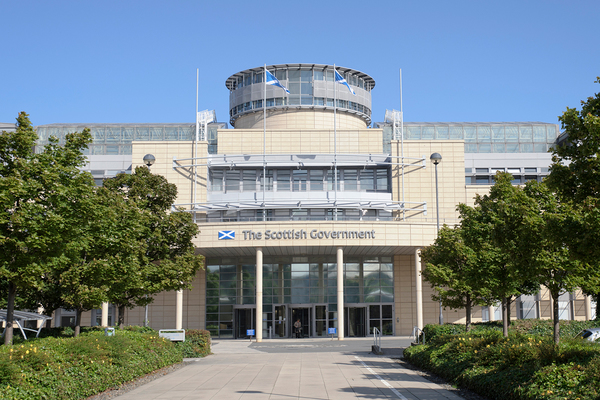What does the Programme for Government mean for housing in Scotland?
Adam Lang of Shelter Scotland analyses the housing policies in last week’s Scottish Programme for Government
Last week saw the long-awaited statement from first minister Nicola Sturgeon on the Scottish Government’s Programme for Government in 2017/18.
So what does this mean for housing policy in Scotland?
Homelessness
Our Homelessness: Far From Fixed campaign aimed to raise the voices of people who had sought help but found obstacles in their way and people who had been left in limbo in temporary accommodation.
The campaign has been heard, and on Tuesday 5 September the first minister announced the following significant and welcome measures on homelessness:
- Establishing a clear national objective to eradicate rough sleeping, recognising that it requires more than just the provision of housing and that every individual will have their own unique needs and challenges
- Establishment of a new homelessness and rough sleeping action group to lead change in this area and identify the actions, services and legislative changes required to end rough sleeping and transform the use of temporary accommodation
- Creation of a new ‘Ending Homelessness Together Fund’ of £50m over a five-year period to support anti-homelessness initiatives and pilot solutions to drive faster change
- Investing an additional £20m in alcohol and drug abuse services
This is a major and welcome development.
Contrast this announcement with the absence of any major remarks on homelessness in last year’s programme for government and you can understand why we are proud of the impact of our campaign in this area.
It is now imperative that this good policy and rhetoric quickly translate into positive change on the ground for those suffering or at risk of homelessness.
Temporary accommodation standards
The full programme for government document also contains a pledge to develop guidance on standards in temporary accommodation for homeless households.
This follows this year’s action to reduce the time that households with children or pregnant women can spend in unsuitable temporary accommodation from 14 to 7 days.
These are welcome developments; Shelter Scotland’s analysis shows that families with children are spending longer and longer in temporary accommodation and we have been campaigning for formal guidance on standards in temporary accommodation since 2012. We need to ensure that local authorities commit the resources necessary to put them into practice.
Empty homes
The Programme for Government document also shored up the Scottish Government’s established commitment to bringing empty homes back into use, noting that the Scottish Empty Homes Partnership, which Shelter Scotland hosts, has helped to bring 2,400 long-term empty homes back into use so far since its inception.
The Programme for Government has committed to a doubling of resources for empty homes work in Scotland, with a focus on encouraging every local authority in Scotland to have a dedicated empty homes officer, and we hope to continue to play a constructive and effective role in supporting the delivery of this important part of tackling Scotland’s housing crisis.
Affordable housing supply
Ministers have recommitted to their welcome established pledge to deliver 50,000 affordable homes over the lifetime of this parliament, with 35,000 of these being for social rent.
While we know this is short of the 60,000 affordable homes that research commissioned by Shelter Scotland shows is needed, it is a welcome step change and it is backed by significant £3bn of investment.
Planning reform
The first minister also announced that ministers will bring forward a planning bill this session at Holyrood to streamline the process and give communities a greater say on how their local areas are developed. This bill will sit alongside a commitment to explore options relating to a land value tax.
These are welcome initiatives and are in line with recommendations from the 2015 Commission on Housing and Wellbeing, which noted the important link between a streamlined planning process and the drive towards community empowerment in Scotland.
From Shelter Scotland’s point of view, these initiatives must complement efforts to deliver the affordable homes Scotland needs, with any drives for efficiency in the planning system not made at the expense of developer contributions to affordable housing.
Warm Homes Bill
We are also pleased to see further details on a Warm Homes Bill, first committed to in 2016, which will introduce a statutory target for fuel poverty reduction in Scotland. Currently more than 700,000 households in Scotland live in fuel poverty and we know that this not only has a major impact on people’s health and well-being, but also on their ability to afford to keep their home.
In Shelter Scotland’s latest impact report, we highlighted that helping people to afford to keep their home was the single most dominant type of advice our advisors across Scotland supported people with last year. Any efforts to meaningfully tackle fuel poverty with regionalised support targeted to those most in need is a welcome step in the right direction.
High-rise housing safety
Following the Grenfell Tower tragedy, the Programme for Government highlights the ongoing work to review and ensure safety standards in high-rise buildings in Scotland. While Scottish building standards are devolved and separate from those in England, the Scottish Government’s established ministerial working group on building and fire safety standards has committed to:
- reviewing the current building standards and fire safety regulatory framework, bringing forward a planned consultation on fire and smoke alarms in Scottish homes
- establishing a targeted fire safety campaign for residents of high-rise buildings
The horrific fire at Grenfell served as an important reminder that for all the recent political focus on the need for new affordable homebuilding, the vast majority of people in Scotland will stay in existing houses.
“We must never lose sight that at the end of the day we are talking about homes. Homes where people should feel safe.”
Built over many decades and to varying standards, these homes, whether private or public, can vary hugely in quality and maintenance standards. All too often the discussion around bulk homebuilding and housing management, such as in tower blocks, is couched in the cold language of economies of scale, efficiencies and infrastructure. In these discussions, we must never lose sight that at the end of the day we are talking about homes. Homes where people and families should feel safe and secure.
Commitments are just the start; the next step is to ensure that good rhetoric delivers real change for the people who so desperately need it.
Adam Lang, head of communications and policy, Shelter Scotland










